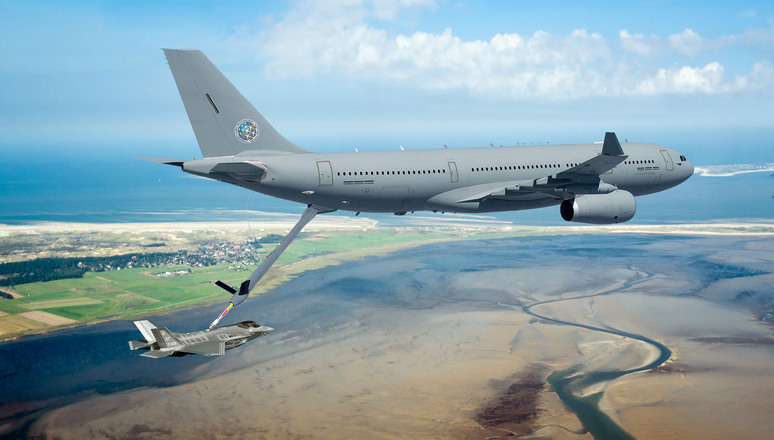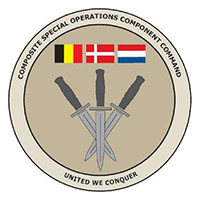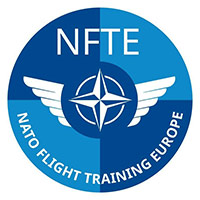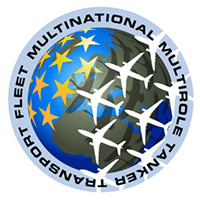Multinational capability cooperation
To carry out its operations, missions and other activities, NATO needs Allies to invest in interoperable, cutting-edge and cost-effective equipment. To that end, NATO plays an important role in helping countries decide how and where to invest in their defence. The Alliance also supports Allies in identifying and developing multinational cooperative initiatives, including a wide range of High Visibility Projects (HVPs), to deliver the key defence capabilities needed for Alliance security.

A fighter jet receives air-to-air refuelling from a Multi Role Tanker Transport (MRTT) aircraft, one of the multinational capabilities that Allies have developed together.
- NATO is helping Allies and partner countries to identify opportunities for multinational capability cooperation and develop High Visibility Projects (HVPs) in key areas such as air-to-air refuelling, ammunition, drones, air and missile defence, command and control, and training.
- The aim is to drive down costs through economies of scale while improving operational values through increased commonality of equipment, training, doctrine and procedures.
- NATO works with the European Union to avoid duplication and ensure complementarity of efforts.
High Visibility Projects
NATO Allies have launched 29 projects to deliver improved operational effectiveness, economies of scale and connectivity among Allies and partners. These projects address key capability areas such as air-to-air refuelling, ammunition, maritime uncrewed systems, command and control, and training. The current projects, which are in different stages of establishment, are:
Command and control
- Composite Special Operations Component Command (C-SOCC)
- Regional Special Operations Component Command (R-SOCC)
Training structures
- Multinational Special Aviation Programme (MSAP)
- NATO Flight Training Europe (NFTE)
- Distributed Synthetic Training Environment (DST)
High-end acquisition
- Multi Role Tanker Transport Capability (MRTT-C)
- Maritime Multi Mission Aircraft (M3A)
- Maritime Uncrewed Systems (MUS)
- Next Generation Rotorcraft (NGRC)
- Remotely Piloted Aircraft Systems (RPAS)
Air and missile defence
- Command and Control Capability for Surface Based Air and Missile Defence for the Battalion and Brigade Level (SBAMD C2 Layer)
- Modular Solution for Ground Based Air Defence Capabilities (Modular GBAD)
- Rapidly Deployable Mobile Counter Rockets, Artillery and Mortar (C-RAM)
- Lower-level air threats
- Passive air surveillance sensors
Military mobility and counter-mobility
- Gap Crossing
- Counter-Mobility
- Military Engineering Vehicles and Systems
Ammunition
- Air Battle Decisive Munitions (ABDM)
- Land Battle Decisive Munitions (LBDM)
- Maritime Battle Decisive Munitions (MBDM)
- Multinational Ammunition Warehousing Initiative (MAWI)
- Test, Evaluation and Certification of Interchangeability of Indirect Fire Munitions
Chemical, biological, radiological and nuclear (CBRN) defence
- Network of CBRN Defence Facilities (CBRN-DF)
- CBRN Protection Equipment (CBRN-PE)
- CBRN Detection and Identification (CBRN-D&I)
Space technologies
- Alliance Persistent Surveillance from Space (APSS)
- NORTHLINK
- STARLIFT
In addition, countries continue to discuss promising areas for multinational cooperation in order to provide cost-effective security.
Command and control
Command and control (C2) consists of the leadership and direction given to a military organisation in order to accomplish its mission. C2 is key in carrying out any NATO operation successfully and makes the operation work smoothly and efficiently. The projects below present examples of how C2 can be handled at a multinational level.
Composite Special Operations Component Command (C-SOCC)

Purpose: Special Operations Forces increasingly operate in a multinational context. This is why having a multinational headquarters for their management is key. The Composite Special Operations Component Command (C-SOCC) combines national capabilities from the three participating countries, enabling them to deploy and command Special Operations Forces task groups with capabilities greater than the sum of their parts. C-SOCC is available for the NATO Force Model and could also be used to support NATO operations and missions.
Participants: Belgium, Denmark and the Netherlands
Status: Established and delivering. C-SOCC was launched in February 2017 and became fully operational in December 2020.
Regional Special Operations Component Command (R-SOCC)
Purpose: Regional Special Operations Component Command (R-SOCC) provides participating countries with a temporary deployable headquarters dedicated to managing Special Operations. The Command, which is led by Hungary, increases the ability of its participants to employ their Special Operations Forces separately or in concert. Having strong regional Special Operations Forces across the Alliance enhances NATO’s ability to respond rapidly to arising crises.
Participants: Croatia, Hungary, Slovakia, Slovenia and NATO partner Austria
Status: Established. R-SOCC was launched in February 2019, reached Initial Operational Capability in May 2021, and Full Operational Capability is expected to be reached in 2025.
Training structures
All Allied forces need proper training to confront a variety of security challenges and to perform their duties. Multinational training enables forces of different Allies to train together, improve coordination and cooperation, and increase their readiness.
Multinational Special Aviation Programme (MSAP)

Purpose: Special Operations Forces are a highly valuable and versatile tool for effectively responding to evolving security threats. To further strengthen NATO in this domain, a number of Allies have created a Multinational Special Aviation Programme (MSAP) dedicated exclusively to training aircrews who conduct the insertion and extraction of Special Operations Forces. This training facility, stationed in Zadar, Croatia, has been established in a gradual manner, expanding the training opportunities offered over time.
Participants: Bulgaria, Croatia, Hungary and Slovenia
Status: Established. The aviation training centre officially opened its doors on 11 December 2019. The first group of students graduated from a first training module in October 2020, with further groups of students completing the training since then.
NATO Flight Training Europe (NFTE)

Purpose: Delivering state-of-the-art pilot training is an increasingly costly and challenging endeavour. For many European Allies, the national pilot requirements needed each year are too small to justify the establishment or maintenance of national flight centres. To overcome this challenge, the NFTE initiative has created a network of multinational training facilities for fighter jet, helicopter, fixed wing and drone pilots across Europe, leveraging already existing structures to the maximum extent possible. The establishment of the NFTE is significantly decreasing the reliance on US training facilities by making European Allies capable of training their own flight crews in a multinational context. As such, the NFTE serves as an excellent example of transatlantic burden-sharing among NATO Allies from Europe and North America.
Participants: Belgium, Czechia, Germany, Greece, Hungary, Italy, Montenegro, the Netherlands, North Macedonia, Romania, Spain, Türkiye and the United Kingdom
Status: Established and delivering. The NFTE initiative was launched in the margins of the 2021 NATO Summit in Brussels. Fourteen NFTE training campuses have been established across the Alliance so far.
Distributed Synthetic Training Environment (DST)
Purpose: The Distributed Synthetic Training Environment project aims to respond to the ever-growing demand for virtual training at the multinational level. It establishes a network of advanced and immersive multinational training opportunities for militaries. By leveraging national simulation-based training capabilities for multinational purposes, the project will bring operational benefits and economies of scale.
Participants: Belgium, Czechia, Denmark, Estonia, France, Germany, Greece, Italy, Latvia, the Netherlands, Norway, Poland, Portugal, Spain, Sweden, Türkiye, the United Kingdom and the United States
Status: Being established. DST was launched in October 2024.
High-end acquisition
Equipment used in NATO operations and missions differs in size and cost. While some types of equipment are small and affordable, other capabilities may be too big or too expensive for single countries to operate in an economically viable way. Countries are cooperating on several high-end projects that they could not afford individually.
Multi Role Tanker Transport Capability (MRTT-C)

Purpose: The MRTT is a multi-function aircraft that can transport cargo and troops, and serve as an aerial refuel tanker. Air-to-air refuelling tankers are especially critical for the projection of air power. As they are a pooled asset, interoperability is essential. The MRTT-C project enables participating Allies to collectively acquire Airbus A330 Multi Role Tanker Transport aircraft, establishing a multinationally owned and operated fleet of MRTTs. For this initiative, NATO and the European Union (EU) joined forces, as both organisations identified shortfalls in air-to-air refuelling and the participating Allies, with the exception of Norway, are also members of the EU. As such, it is an example of the close cooperation between NATO and the EU.
Participants: Belgium, Czechia, Germany, Luxembourg, the Netherlands and Norway
Status: Established and delivering. The first aircraft was delivered in June 2020. The MRTT fleet reached initial operational capability in March 2023. The last aircraft delivery is scheduled in 2026, after which the fleet will have 10 aircraft.
Maritime Multi Mission Aircraft (M3A)
Purpose: When it comes to maritime defence and security, it is vital for NATO to provide continuous situational awareness and anti-submarine warfare capabilities. As a shared starting point for future implementation activities, a group of NATO Allies created a common set of requirements under the Maritime Multi Mission Aircraft project (M3A). France and Germany took a first step forward by starting to develop a Maritime Airborne Warfare System (MAWS) to serve as a maritime situational awareness tool.
Participants: Canada, France, Germany, Greece, Italy, Poland, Spain and Türkiye
Status: Completed. M3A was launched in June 2017 and delivered on its key user requirements in October 2018.
Maritime Uncrewed Systems (MUS)
Purpose: Uncrewed systems are an increasingly important capability for NATO, increasing the Alliance's ability to respond to threats in the maritime domain. To facilitate multinational cooperation in this area, a group of Allied and partner countries have joined forces via the MUS initiative to develop tailor-made solutions including, but not limited to, systems for detecting and clearing mines, and tracking submarines.
Participants: Belgium, Bulgaria, Canada, Denmark, France, Germany, Greece, Italy, the Netherlands, Norway, Poland, Portugal, Spain, Türkiye, the United Kingdom, the United States and NATO partner Australia
Status: Established. The MUS initiative was launched in October 2018. Since September 2019, Portugal has hosted the annual exercise REPMUS, bringing together Allies and partners to test new maritime uncrewed systems.
Next Generation Rotorcraft (NGRC)

Purpose: Helicopters – or, more broadly, vertical lift capabilities – are an integral enabler for the operations of Allied forces. Yet, a large percentage of helicopters in service are based on models introduced as far back as the 1960s. To ensure that NATO maintains its technological edge in this area, a group of NATO Allies are working together to develop and acquire the next generation of medium multi-role helicopters. Through NGRC, Allies will benefit from advances not only in airframe and propulsion technology (including hybrid and electric options), but also in the digital infrastructure of the capability, ensuring that helicopters and other vertical lift vehicles will be ready to serve Allied forces for the next decades.
Participants: France, Germany, Greece, Italy, the Netherlands and the United Kingdom
Status: Established. NGRC was launched in October 2020. It aims to develop helicopters for an in-service date in the 2035-2040 timeframe. In October 2024, five of the participating Allies (France, Germany, Italy, the Netherlands and the United Kingdom) committed to identifying a single preferred solution for the replacement of these capabilities by the end of 2027, thereby enabling the development of this solution in 2030.
Remotely Piloted Aircraft Systems (RPAS)
Purpose: Remotely Piloted Aircraft Systems (RPAS) – also known as uncrewed aerial vehicles (UAVs) or drones – are essential to a range of roles and missions including joint intelligence, surveillance and reconnaissance (ISR) and electromagnetic warfare. This project aims to accelerate the delivery of a new generation of RPAS – such as NATO’s Alliance Ground Surveillance (AGS) fleet, part of the NATO ISR Force (NISRF) – through multinational cooperation.
Participants: Czechia, Estonia, Finland, Greece, Italy, Latvia, Lithuania, Norway, Portugal, Romania, Spain, Türkiye and the United Kingdom
Status: Being established. RPAS was launched in October 2024.
Air and missile defence
NATO has been working for years to strengthen its air and missile defence capabilities in order to protect its populations, territory and forces against increasingly sophisticated air threats. The following projects are helping Allies develop new capabilities in this area.
Command and Control Capability for Surface Based Air and Missile Defence for the Battalion and Brigade Level (SBAMD C2 Layer)
Purpose: The SBAMD C2 Layer project aims to facilitate the acquisition and fielding of an air defence management solution to enable a layered, surface-based air and missile defence approach. The commonly acquired SBAMD C2 Layer capability will reduce the number of systems currently in use by NATO Allies and therefore increase interoperability and resilience.
Participants: Denmark, France, Hungary, Italy, Portugal, Spain, the United Kingdom and the United States
Status: Established. The SBAMD C2 Layer project was launched in October 2021.
Modular Solution for Ground Based Air Defence Capabilities (Modular GBAD)
Purpose: The Modular GBAD effort aims to jointly develop and acquire a flexible and scalable GBAD system to counter air threats at very short, short and medium range. The system is being designed around a common command-and-control backbone. Due to its modular nature, participants will be able to design tailored GBAD force packages for individual operations.
Participants: Denmark, Germany, Greece, Hungary, Italy, the Netherlands, Norway, Romania, Slovenia, Spain and the United Kingdom
Status: Established. Modular GBAD was launched in October 2020. It entered its Concept Stage in February 2023.
Rapidly Deployable Mobile Counter Rockets, Artillery and Mortar (C-RAM)
Purpose: Effective protection of Allied forces and forward-deployed bases against rockets, artillery and mortar threats is a key requirement to ensure NATO's readiness. The C-RAM initiative aims to develop and procure a rapidly deployable capability to detect and destroy incoming rockets, artillery and mortar rounds in the air, before they hit the ground. A particular focus will be on exploring highly innovative solutions to reduce operational cost while increasing resilience of the systems against high-volume attacks.
Participants: Germany, Greece, Hungary, Norway, Poland, the United Kingdom and the United States
Status: Established. C-RAM was launched in October 2020. The effort is currently being taken forward as a work strand under the Modular GBAD Concept Stage.
Lower-level air threats
Purpose: Russia’s brutal war against Ukraine has shown how effective and dangerous technologies such as small drones can be in conflict. Increasing NATO’s ability to detect, identify, track and respond to these new threats while exploiting technological advances for enhanced deterrence and defence is essential to the Alliance. Through the lower-level air threats initiative, participating Allies are committed to developing more efficient solutions to defend against lower-level air threats – that is, threats flying below 150 metres (500 feet), which is less than half the height of the Eiffel Tower.
Participants: Belgium, Denmark, Estonia, Finland, France, Greece, Latvia, Lithuania, the Netherlands, Norway, Portugal, Romania, Spain, Türkiye and the United Kingdom
Status: Being established. The lower-level air threats initiative was launched in February 2025.
Passive air surveillance sensors
Purpose: Passive air surveillance, such as noise detection, plays a vital role in identifying incoming threats that are otherwise undetectable by active air surveillance capabilities, such as radars and satellites. This initiative will help participating Allies develop new passive air surveillance capabilities, further enhancing the protection of their airspace.
Participants: Belgium, Czechia, Denmark, Estonia, Finland, France, Greece, Latvia, Lithuania, the Netherlands, Norway, Portugal, Romania, Spain, Türkiye and the United Kingdom
Status: Being established. The passive air surveillance initiative was launched in February 2025.
Military mobility and counter-mobility
NATO Allies need to be able to move their forces across Alliance territory quickly and efficiently. They must also be prepared to slow or stop the movement of potential adversaries. To that end, several multinational initiatives have been launched to enhance Allies’ military mobility and counter-mobility capabilities.
Gap Crossing
Purpose: The Gap Crossing project aims to identify, prepare and execute multinational development and procurement of various military bridging assets, such as assault bridges, logistic bridges, amphibious and floating bridging systems, floating bridge adapters, and technical solutions for upgrading the load-bearing capacity of certain military bridges. It also seeks to explore the possibility of establishing a multinational stockpile of military bridges, with a particular focus on logistic bridges.
Participants: Belgium, Croatia, Finland, Germany, Greece, Italy, Latvia, the Netherlands, Romania, Spain, the United Kingdom and the United States
Status: Established. The Gap Crossing project was launched in February 2023.
Counter-Mobility
Purpose: The Counter-Mobility project aims to deliver innovative lethal and non-lethal counter-mobility assets through multinational development and procurement. In addition, it also intends to create a permanent framework for the enduring provision of counter-mobility assets (such as a new NATO Support and Procurement Agency (NSPA) Support Partnership).
Participants: Belgium, Croatia, Finland, Germany, Italy, Latvia, the Netherlands, Romania, Spain, the United Kingdom and the United States
Status: Established. The Counter-Mobility project was launched in February 2023.
Military Engineering Vehicles and Systems
Purpose: The Military Engineering Vehicles and Systems project seeks to deliver various military engineering vehicles and systems through multinational development and procurement. The scope of the project will cover a wide range of vehicles and systems, such as armoured engineering vehicles, breaching vehicles, uncrewed or autonomous engineering vehicles, and modular mission payloads.
Participants: Croatia, Germany, Greece, Italy, Romania, Spain and the United Kingdom
Status: Established. The Military Engineering Vehicles and Systems project was launched in February 2023.
Ammunition
Ammunition is an essential part of every military operation. In order to ensure that Allied and partner forces are well equipped, a number of projects have been launched at multinational level.
Air Battle Decisive Munitions (ABDM)
Purpose: This project is a multinational framework for acquiring all air battle decisive munitions. It aims to increase the flexibility in stockpile management by reducing legal and technical obstacles for sharing and exchanging munitions among the participating Allies. This is enabling the Alliance to bridge the interoperability gap in this area, which NATO first encountered during its 2011 operation in Libya, as well as support the European Allies in reducing dependence on the United States when it comes to air missions. This framework has, so far, already delivered significant cost and time savings to its participants through several rounds of multinational acquisition.
Participants: Belgium, Canada, Czechia, Denmark, Finland, Greece, Hungary, Italy, the Netherlands, Norway, Poland, Portugal, Romania, Slovakia, Spain and the United Kingdom
Status: Established. The ABDM project was launched by six Allies at the 2014 Wales Summit. The initial delivery of the first acquisition cycle was in August 2018, and further deliveries through several cycles have taken place since then.
Land Battle Decisive Munitions (LBDM)
Purpose: Modelled after its parent project above, the LBDM project creates a multinational framework for acquiring munitions for the land domain, such as 155mm artillery, anti-tank guided missiles and main battle tank ammunition. The LBDM initiative increases the Alliance's ability to share munitions and work more smoothly in the field. Over time, this initiative is helping troops increase their interoperability and effectiveness, harmonising munitions inventories and enabling participants to operate seamlessly and effectively together. It currently involves 24 countries, making it one of the largest High Visibility Projects.
Participants: Belgium, Croatia, Czechia, Denmark, Estonia, Finland, France, Germany, Italy, Latvia, Lithuania, Montenegro, the Netherlands, North Macedonia, Norway, Poland, Portugal, Romania, Slovakia, Slovenia, Spain, Sweden, the United Kingdom and NATO partner Austria
Status: Established and delivering. The LBDM project was launched in June 2017. The first deliveries were received in January 2019.
Maritime Battle Decisive Munitions (MBDM)
Purpose: Like the two initiatives above, the MBDM involves participants combining munitions purchases, in this case in the maritime domain. This includes surface-to-air and surface-to-surface missiles, torpedoes and gun shells. This effort presents an important step towards creating European stockpiles of high-quality maritime munitions that meet the Alliance's evolving needs.
Participants: Belgium, Finland, France, Italy, the Netherlands, Poland, Portugal and Spain
Status: Established. The MBDM project was launched in July 2018.
Multinational Ammunition Warehousing Initiative (MAWI)
Purpose: Ammunition storage is a vital element of NATO's stockpile planning and a key enabler for NATO operations. The MAWI initiative defines a single operational principle under which the participants can create and operate a wide range of warehousing solutions. The scalable, expandable and flexible approach gives participating countries the option to adapt the storage solution to their needs while benefitting from significant cost reductions.
Participants: Belgium, Bulgaria, Canada, Czechia, Denmark, Estonia, Finland, France, Germany, Greece, Hungary, Italy, Latvia, Lithuania, Luxembourg, the Netherlands, Norway, Poland, Portugal, Romania, Slovakia, Slovenia, Spain, Sweden, Türkiye, the United Kingdom and the NATO Support and Procurement Agency (NSPA). With 26 participating countries, MAWI is the largest High Visibility Project.
Status: Established and delivering. The MAWI project was launched in July 2021.
Test, Evaluation and Certification of Interchangeability of Indirect Fire Munitions
Purpose: The interchangeability and interoperability of key Allied artillery munitions allows NATO Allies to share artillery among different armed forces and work together more easily in multinational operations. This project will contribute to harmonising national fire testing and certification mechanisms for artillery munitions. It will also help keep relevant standards up-to-date and support their adoption.
Participants: Czechia, Denmark, Finland, France, Greece, Hungary, Italy, Latvia, Lithuania, Norway, Portugal, Slovakia, Türkiye, the United Kingdom and the United States
Status: Being established. The project was launched in October 2024.
Chemical, biological, radiological and nuclear (CBRN) defence
Chemical, biological, radiological and nuclear (CBRN) agents represent complex threats and distinct challenges to NATO and Allied security. Three multinational projects have been launched to help Allies coordinate training, share information and acquire equipment that will increase the level of preparedness among Allied CBRN defence forces.
Network of CBRN Defence Facilities (CBRN-DF)
Purpose: The CBRN-DF project connects various chemical, biological, radiological and nuclear (CBRN) defence facilities within a single architecture. This will help make the capabilities of these facilities – which range from live-agent training sites to analytical laboratories – more widely available across the Alliance.
Participants: Belgium, Greece, Italy and Spain, supported by the German-led CBRN Cluster under the Framework Nation Concept
Status: Established. This project was launched in October 2021, alongside the two other CBRN-related initiatives.
CBRN Protection Equipment (CBRN-PE)
Purpose: The CBRN Protection Equipment project provides participating Allies with a framework to jointly procure individual protective gear and collective protection systems for their military units and personnel.
Participants: Albania, Belgium, Greece, Hungary, Italy, Latvia, the Netherlands, Spain, the United Kingdom and the United States
Status: Established. This project was launched in October 2021, alongside the two other CBRN-related initiatives.
CBRN Detection and Identification (CBRN-D&I)
Purpose: Similar to the above project for the procurement of protection equipment, the CBRN Detection and Identification project provides participating Allies with a framework to jointly develop and procure more advanced solutions for detecting and identifying CBRN agents.
Participants: Albania, Belgium, Greece, Italy, Latvia, the Netherlands, Poland, the United Kingdom and the United States
Status: Established. This project was launched in October 2021, alongside the two other CBRN-related initiatives.
Space technologies
Space is increasingly important to the Alliance's security and prosperity. The information gathered and delivered through satellites is critical for NATO activities, operations and missions, including collective defence, crisis response and counter-terrorism. Through the use of satellites, Allies and NATO can respond to crises with greater speed, effectiveness and precision.
Alliance Persistent Surveillance from Space (APSS)
Purpose: The Alliance Persistent Surveillance from Space (APSS) initiative will enhance cooperation on space-based surveillance in support of the implementation of NATO’s overarching Space Policy. Space-based assets, such as satellites, can provide real-time information on the movement of enemy forces, weather conditions and terrain – essential information for understanding the battlefield and making informed decisions. This new mechanism will establish a large-scale, virtual constellation of national and commercial surveillance satellites, called “Aquila”. It will provide the Alliance with faster and better intelligence, integrate even more space-based data into NATO’s intelligence ecosystem and leverage technological breakthroughs from the commercial sector. Luxembourg's early contribution of EUR 16.5 million has laid the groundwork for this transformative initiative and will allow participating countries to contribute to Aquila through their own assets, data and/or funds.
Participants: Belgium, Bulgaria, Canada, Finland, France, Germany, Greece, Hungary, Italy, Luxembourg, the Netherlands, Norway, Poland, Romania, Spain, Sweden, Türkiye, the United Kingdom and the United States
Status: Established and delivering. The APSS initiative was launched in February 2023.
NORTHLINK
Purpose: Through NORTHLINK, participating Allies are exploring the development of a secure, resilient and reliable multinational Arctic satellite communications capability. The increased militarisation of the Arctic region by potential adversaries and strategic competitors is concerning for the Alliance. NORTHLINK is intended to leverage commercial and government-owned capabilities, providing more resilient communications.
Participants: Canada, Denmark, Finland, France, Germany, Hungary, Iceland, Italy, Luxembourg, the Netherlands, Norway, Sweden and the United States
Status: Being established. The NORTHLINK project was launched in October 2024.
STARLIFT
Purpose: Through STARLIFT, participating Allies are investigating ways to strengthen NATO’s access to and use of space to deal with a range of challenges. STARLIFT aims to develop a network of launch capabilities that will help Allies launch assets at short notice from space ports across the Alliance, boosting NATO’s ability to react more quickly to threats from space. It will also explore options like manoeuvring pre-positioned spare spacecraft or buying data from commercial partners during a crisis or conflict.
Participants: Belgium, Finland, France, Germany, Hungary, Italy, Luxembourg, the Netherlands, Norway, Spain, Sweden, Türkiye, the United Kingdom and the United States
Status: Being established. The STARLIFT project was launched in October 2024.
How does it work?
Allies are constantly exploring new multinational initiatives to develop, in the most cost-efficient way, the key capabilities the Alliance needs to face today’s security challenges.
NATO’s High Visibility Projects (HVPs) focus on delivering the most critical capabilities in an accelerated manner by creating political commitments in the form of agreements signed by Defence Ministers. An initial document, also called a Letter of Intent (LOI) – outlining the general cooperation idea – is signed by the Defence Ministers involved in the project. It is followed by the signature of a Memorandum of Understanding (MOU), a legally binding document specifying the details of cooperation. The MOUs provide the necessary legal framework for the execution of the implementation phase towards the delivery of the specific capability. The high-level political involvement dramatically increases the prospects of expedient and tangible progress.
In the implementation phase of most projects, the NATO Support and Procurement Agency (NSPA) is the intermediary between the countries and industry. This can happen at different levels: NSPA can invite industry to present solutions for Allies and partners to acquire, be involved in the procurement process, or even negotiate on behalf of countries with industry.
The Conference of National Armaments Directors (CNAD) – the senior NATO committee that brings together the top national officials responsible for defence procurement in NATO member and partner countries – is also involved in multinational capability cooperation. It is tasked with identifying collaborative opportunities for research, development and production of military equipment and weapons systems, and is responsible for a number of cooperative armaments projects that aim to equip NATO forces with cutting-edge capabilities.
